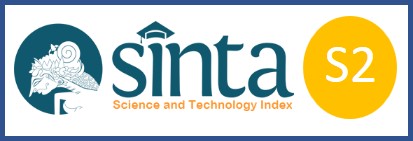The Effect of Electronic Money Transactions on Household Consumption
Downloads
This study aims to determine the effect of the volume of electronic money transactions on household consumption in Indonesia, Malaysia, Thailand, and Singapore from 2012 to 2019. The seemingly unrelated regression method was chosen due to heteroscedasticity and contemporaneous correlation problems in the model. This method estimates the relationship between the volume of electronic money transactions and household consumption. In this study, electronic money is used in the form of chips and servers. The results of this study indicate that Indonesia, Malaysia, Thailand, and Singapore have a significant positive relationship between the volume of electronic money transactions and household consumption. It indicates that consumers already have confidence in the non-cash payment transaction system, especially electronic money, and feel that using it is more efficient, fast, and secure.
Al Rasasi, M., Alzahrani, Y., & Alassaf, M. (2021). On the Causal Relationship between Household Consumption and Economic Growth in Saudi Arabia. Business and Economic Research, 11(2), 165-177. https://doi.org/10.5296/ber.v11i2.18386
Amin, S. B. (2011). Causal Relationship between Consumption Expenditure and Economic Growth in Bangladesh. World Journal of Social Sciences, 1(2), 158–169. https://www.researchgate.net/profile/Sakib-Amin/publication/305493449_Causal_Relationship_between_Consumption_Expenditure_and_Economic_Growth_in_Bangladesh/links/5791b87b08ae0831552fd274/Causal-Relationship-between-Consumption-Expenditure-and-Economic-Growth-in-Bangladesh.pdf
Bank Indonesia. (2009). Peraturan Bank Indonesia Nomor: 11/12/PBI/2009 Tentang Uang Elektronik (Electronic Money) [Bank Indonesia Regulation Number: 11/12/PBI/2009 on Electronic Money]. Bank Indonesia. https://www.bi.go.id/elicensing/helps/PBI_111209-Emoney.pdf
Bank Indonesia. (2016). Ekonomi Digital Dorong Pertumbuhan [Digital Economy Drives Growth]. Bank Indonesia.
Bank Indonesia. (2020). Laporan Pelaksanaan Tugas dan Wewenang Bank Indonesia [Report on the Implementation of Duties and Authorities of Bank Indonesia]. Bank Indonesia. https://www.bi.go.id/id/publikasi/laporan/Documents/LaptriDPR_0320.pdf
Bareksa. (2019). Tiga Strategi BI Dorong Ekonomi Digital sebagai Sumber Pertumbuhan Ekonomi Baru [BI's Three Strategies to Encourage Digital Economy as a Source of New Economic Growth]. Bareksa. https://www.bareksa.com/berita/berita-ekonomi-terkini/2019-10-07/tiga-strategi-bi-dorong-ekonomi-digital-jadi-sumber-pertumbuhan-baru
Campelo, A., Bittencourt, V. S., & Malgarini, M. (2020). Consumers Confidence and Households Consumption in Brazil: Evidence from the FGV Survey. Journal of Business Cycle Research, 16(1), 19–34. https://doi.org/10.1007/s41549-020-00042-2
Davis, F. D., Bagozzi, R. P., & Warshaw, P. R. (1989). User Acceptance of Computer Technology: A Comparison of Two Theoretical Models. Management Science, 35(8), 982–1003. https://doi.org/10.1287/mnsc.35.8.982
International Monetary Fund. (2000). Monetary and Financial Statistics Manual. https://www.imf.org/external/pubs/ft/mfs/manual/pdf/mmfsft.pdf
Keho, Y. (2019). An Econometric Analysis of the Determinants of Private Consumption in Cote d'Ivoire. Theoretical Economics Letters, 9(4), 947–958. https://doi.org/10.4236/tel.2019.94061
Ministry of Finance. (2016). Ekonomi Digital Dukung Pertumbuhan dan Inklusi Keuangan [Digital Economy Supports Growth and Financial Inclusion]. Bank Indonesia.
Mankiw, N. G. (2006). Makroekonomi (6th ed.) [Macroeconomics]. Erlangga.
Mankiw, N. G. (2016). Macroeconomics (9th ed.). Worth Publisher.
Marshall, M., & Coke, O. (2016). A Sectoral Analysis of E-Money Consumption and Growth. Social and Economic Studies, 65(2 & 3), 69–98. http://www.jstor.org/stable/26380232
Nariyanuri, S. S. (2021). Southeast Asia E-Money Market Report. https://www.spglobal.com/marketintelligence/en/news-insights/research/southeast-asia-e-money-market-report-shows-tech-firms-disrupting-banks
OJK. (2020). Siaran Pers Bersama: Regulator dan Pelaku Industri Ekonomi Digital Wujudkan Sinergi Melalui Indonesia Fintech Summit 2020 [Joint Press Release: Regulators and Digital Economy Industry Players Realize Synergy Through Indonesia Fintech Summit 2020]. https://ojk.go.id/id/berita-dan-kegiatan/siaran-pers/Pages/Siaran-Pers-Bersama-Regulator-dan-Pelaku-Industri-Ekonomi-Digital-Wujudkan-Sinergi-Melalui-Indonesia-Fintech-Summit-2020.aspx
Prihantono, G. (2017). Impact Microfinance Credit Access to Improve Household Welfare: Evidence Longitudinal Data. JMBI UNSRAT (Jurnal Ilmiah Manajemen Bisnis Dan Inovasi Universitas Sam Ratulangi), 4(2), 82–94. https://doi.org/10.35794/jmbi.v4i2.17979
PwC. (2019). Global Consumer Insights Survey 2019: It's time for a consumer-centred metric: introducing "return on experience.” PwC.
Senkantsi, L. P. (2016). Determinants of Real Private Consumption Expenditure in Lesotho. European Journal of Economics and Management, 3(2), 58-75. https://doi.org/10.1093/qje/qjs020.Advance
Slozko, O., & Pelo, A. (2014). the electronic payments as a major factor for futher economic development. Economics and Sociology, 7(3), 130–140. https://doi.org/10.14254/2071-789X.2014/7-3/10
Tee, H. H., & Ong, H. B. (2016). Cashless payment and economic growth. Financial Innovation, 2(1), 1–9. https://doi.org/10.1186/s40854-016-0023-z
Tshukudu, M. K. (2018). The Relationship Between Electronic-Money Penetration and Household Consumption: VECM Granger Causality Analysis. BIDPA Working Paper 48, Botswana Institute for Development Policy Analysis.
Wong, T. L., Lau, W. Y., & Yip, T. M. (2020). Cashless Payments and Economic Growth: Evidence from Selected OECD Countries. Journal of Central Banking Theory and Practice, 9, 189–213. https://doi.org/10.2478/jcbtp-2020-0028
Zandi, M., Koropeckyj, S., Singh, V., & Matsiras, P. (2016). The Impact of Electronic Financial Payments on Economic Growth. 1–31. https://www.tralac.org/images/docs/9254/the-impact-of-electronic-payments-on-economic-growth-moodys-analytics-visa-february-2016.pdf
Zandi, M., Singh, V., & Irving, J. (2013). The impact of inequality on economic growth on economic growth. Moody's anal, 1-16.
Copyright (c) 2023 Gigih Prihantono, Afif Kusnul Kholifah

This work is licensed under a Creative Commons Attribution-ShareAlike 4.0 International License.
JIET (Jurnal Ilmu Ekonomi Terapan) (p-ISSN: 2541-1470; e-ISSN: 2528-1879) is licensed under a Creative Commons Attribution-ShareAlike 4.0 International License
Authors who publish with JIET (Jurnal Ilmu Ekonomi Terapan) agree to the following terms:
- The journal allows the author to hold the copyright of the article without restrictions.
- The journal allows the author(s) to retain publishing rights without restrictions
- The legal formal aspect of journal publication accessibility refers to Creative Commons Attribution ShareAlike 4.0 International License (CC BY-SA).












